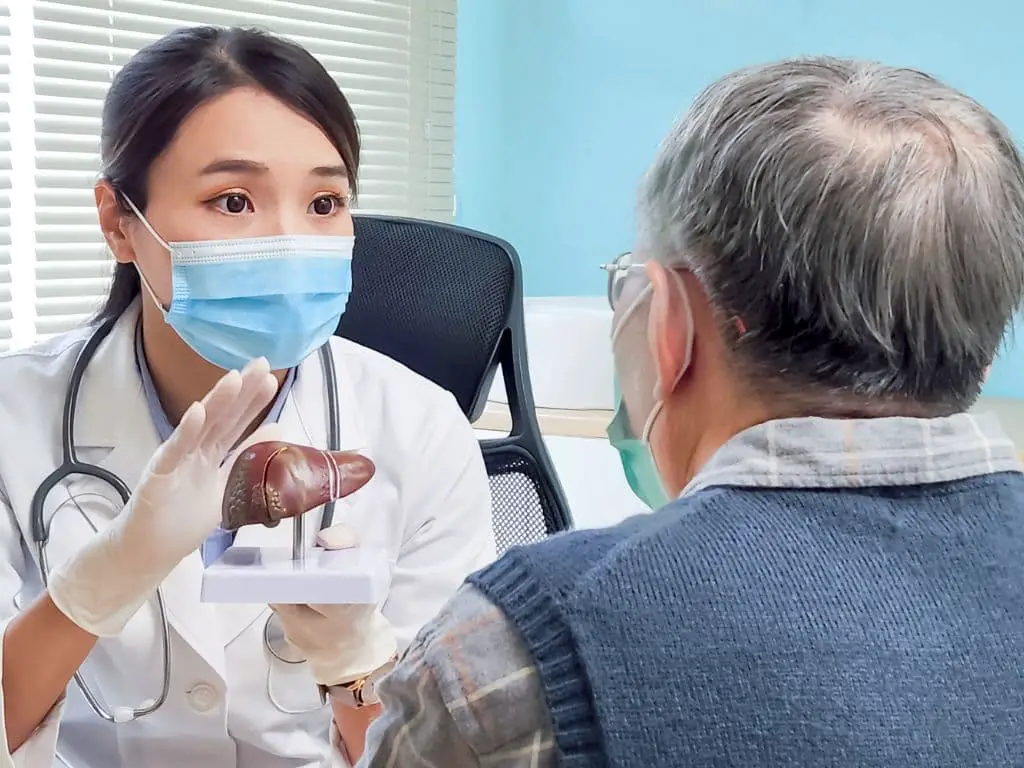Does China Have Free Healthcare?
Healthcare in China is not entirely free, but it is mostly subsidized by the national government. As of 2020, about 95% of the population has basic health insurance coverage through a system that includes both employee medical insurance and resident medical insurance. However, public health insurance generally only covers about half of medical costs, with the proportion being lower for serious or chronic illnesses.

Pros and Cons of China’s Healthcare System
The healthcare system in China has undergone significant changes over the years, with notable improvements in infrastructure and coverage. However, like any system, it has both its advantages and drawbacks.
Pros
- Extensive Coverage: China has established a national healthcare system that covers approximately 90% of its vast population. The New Rural Co-operative Medical Care System (NRCMCS), launched in 2005, provided basic medical coverage to about 800 million rural residents.
- Integration of Traditional and Modern Medicine: China maintains two parallel medical systems – one for Western medicine and one for Traditional Chinese Medicine (TCM). This combination allows patients to choose treatments that best suit their preferences and needs.
- Cost-Effective Traditional Medicine: Traditional Chinese Medicine, which includes herbal treatments, acupuncture, and other unique practices, is usually more cost-effective and has milder side effects, making it a popular choice for treating minor and chronic diseases.
- Increasing Number of Medical Professionals: China’s medical education system is expanding, producing more doctors who are trained in Western medicine.
Cons
- Quality and Access Disparity: Despite the broad coverage, the quality of healthcare and access to services can vary based on regional interpretation of national laws. The healthcare infrastructure in urban areas is often superior to those in rural areas.
- High Out-of-Pocket Costs: Public health insurance generally only covers about half of medical costs, with the proportion lower for serious or chronic illnesses. Patients often have to pay for services upfront, which can be burdensome.
- Limited Coverage of Public Healthcare: The public health system has some gaps. It usually does not cover the cost of emergency transportation, does not grant access to private facilities, and family members of the insured may not be covered.
- Complex Private Health Insurance: The landscape of private health insurance can be confusing and expensive. The average costs of health insurance are rarely affordable for people with average wages.
- Language and Cultural Barriers: For expats and foreigners, navigating the healthcare system can be challenging due to significant language barriers and cultural differences.
What Does China’s Healthcare System Offer?
China’s healthcare system is a blend of public and private medical institutions and insurance programs, offering both traditional Chinese medicine and Western medicine. It is regulated by the Ministry of Public Health, which sets and supervises all healthcare policies.
The healthcare system in China provides basic coverage for the majority of its population, including the urban employed population and the rural population. The public healthcare system is financed by the government, employers, and individuals. However, coverage and quality of care can vary significantly based on the region and the type of treatment.
Expats living in China can choose between the public healthcare system, VIP wards, and private medical insurance. However, local hospitals and their VIP wards often don’t accept international insurance; patients need to pay in cash for any treatment and then claim the expenses from their insurance provider.
In terms of medical training, China’s system is based on the British model. Medical students study for five years at undergraduate level, followed by a PhD in medicine. They must then work 1–3 years in a university-affiliated hospital, after which they are eligible to take the National Medical Licensing Examination (NMLE) for physician certification.
Traditional Chinese medicine remains a major component of healthcare in the country, with many traditional practices such as acupuncture, acupressure, and herbal treatments being used alongside Western medicine.
One of the unique features of China’s healthcare system is the “barefoot doctor” scheme in rural areas. These doctors, who work out of village medical centers, provide preventive and primary-care services. They are supplemented by township health centers and county hospitals for more serious cases.
Despite its extensive coverage, China’s healthcare system has several challenges, including disparities in access and quality between urban and rural areas, a shortage of doctors and nurses, particularly in rural areas, and high out-of-pocket costs for patients.
How Free is China’s Healthcare?
China’s healthcare system is not entirely free, but it does have a national healthcare system that covers approximately 90% of its population. However, the coverage varies based on the regional interpretation of national laws.
The healthcare system in China includes free public healthcare under the country’s social insurance plan. This plan provides basic coverage for the majority of the native population and, in most cases, expats as well. Nevertheless, it depends on the region where one resides as some areas do not require foreign residents to support the local healthcare system by paying the appropriate taxes. As a result, these residents are not covered by public healthcare.
Medical insurance in China can be divided into three subcategories: basic cover for urban enterprise employees, basic cover for other urban residents, and rural cooperative medical insurance for the farming population. Urban employee basic medical insurance is obligatory insurance and the healthcare costs are paid by the employer and the employee. For non-enterprise residents, health insurance is paid for by themselves and the state. For the unemployed or those on social assistance, insurance is subsidized by the state.
Regardless of where one lives and how much one is covered, the Chinese healthcare system requires patients to pay for services upfront and out of their own pocket. Depending on the insurance scheme and treatment, patients may be reimbursed for some of the costs or none at all. Public health insurance usually doesn’t cover the cost of emergency transportation or provide access to private facilities.
Who Pays for Healthcare in China?
Healthcare in China is primarily financed through a combination of public and private insurance programs, as well as direct out-of-pocket payments by patients. The Chinese government has established a national healthcare system that covers approximately 90% of its vast population. However, coverage varies based on the regional interpretation of national laws.
There are three subcategories of medical insurance in China: basic cover for urban enterprise employees, basic cover for other urban residents, and rural cooperative medical insurance for the farming population. Urban employee basic medical insurance is obligatory and the healthcare costs are paid by the employer (usually 6% of the salary cost) and the employee (usually 2% of the salary). The self-employed can also benefit from this insurance but must make all contributions. For non-enterprise residents, health insurance is paid for by themselves and the state. For the unemployed or those on social assistance, insurance is subsidized by the state.
However, public health insurance generally only covers about half of medical costs, with the proportion lower for serious or chronic illnesses. Therefore, many Chinese also opt for private health insurance, either through local companies like Ping An Health, Kunlun Health, and PICC Health or international healthcare providers like Cigna, Aetna, MSH, and Bupa.
Despite the wide coverage of public healthcare, patients are required to pay for the services upfront and out of their own pocket. Depending on the insurance scheme and treatment, they may be reimbursed for some of the costs or none at all. Therefore, a significant proportion of healthcare costs in China are also directly covered by patients through out-of-pocket payments.
Do Chinese Citizens Receive Quality Healthcare?
Chinese citizens receive a mix of public and private healthcare services that vary significantly in quality. The healthcare system in China covers about 90% of the population, with each region interpreting national laws differently. The public healthcare system provides basic coverage for urban residents and the rural population, but the care quality and coverage can vary depending on the region.
Public healthcare typically doesn’t cover costs such as emergency transportation, access to private facilities, or non-working family members. As a result, many residents choose to opt for private medical insurance for more comprehensive coverage. However, private healthcare services can be confusing, expensive, and not widely understood by the public.
Private health insurance in China is often unaffordable for people with average wages, and public hospitals might not accept or recognize international health insurance. This means patients have to pay in cash first for any treatment and then claim expenses from their insurance provider.
China does have free public healthcare under the country’s social insurance plan, but the way healthcare works in China requires residents to pay for the services upfront and out of their pocket. Depending on the insurance scheme and treatment, they may be reimbursed for some costs or none at all.
As for the hospital experience, patients may have to cope with the language barrier, cultural attitudes toward pain management, birthing methods, and doctor-patient relationships. Standards of medical care for neo-natal emergencies can vary greatly from clinic to clinic.
While China has made significant strides in its healthcare system, and the government has undertaken major healthcare reforms since the Mao era, the quality of care can differ greatly based on location, insurance coverage, and the type of care required. Despite the progress, many challenges remain, particularly in rural areas and for those requiring specialized care.
It’s worth noting that traditional Chinese medicine also plays a significant role in the country’s healthcare system, providing alternative, culturally unique practices that are widely used in conjunction with modern Western medicine.
Are There Enough Doctors in China’s Hospitals?
While China has made significant strides in its healthcare system, there remains a shortage of doctors and nurses, particularly in rural areas. As of 2018, China had a total of 309,000 general practitioners, which equates to 2.22 per 10,000 people. However, most of these doctors are concentrated in urban areas, leading to significant shortages in rural areas.
The Chinese medical education system is facing challenges as most doctors aim to leave the countryside in favor of the cities after their training. This persistent imbalance in the distribution of healthcare resources has led to inadequate availability of timely medical care for more than 100 million people in rural areas.
Therefore, while the number of doctors in China’s hospitals may seem large in absolute terms, when considering the size of China’s population and the geographical distribution of these doctors, there are not enough doctors in China’s hospitals, particularly in rural ones.
Is Health Insurance Mandatory in China?
Health insurance in China is not mandatory for all residents, but it is highly encouraged and facilitated by the government. The healthcare system in China provides basic coverage for the majority of the native population and, in most cases, expats as well. However, this depends on the region you reside in. Some areas do not require their foreign residents to support the local healthcare system by paying the appropriate taxes, so these residents are not covered by public healthcare.
The basic medical insurance in China can be broken down into three subcategories: basic cover for urban enterprise employees, basic cover for other urban residents, and rural cooperative medical insurance for the farming population. Urban employee basic medical insurance is obligatory for those employed in urban areas and is paid for by both the employer and employee. For non-enterprise residents, health insurance is paid for by themselves and the state. For the unemployed or those on social assistance, insurance is subsidized by the state.






